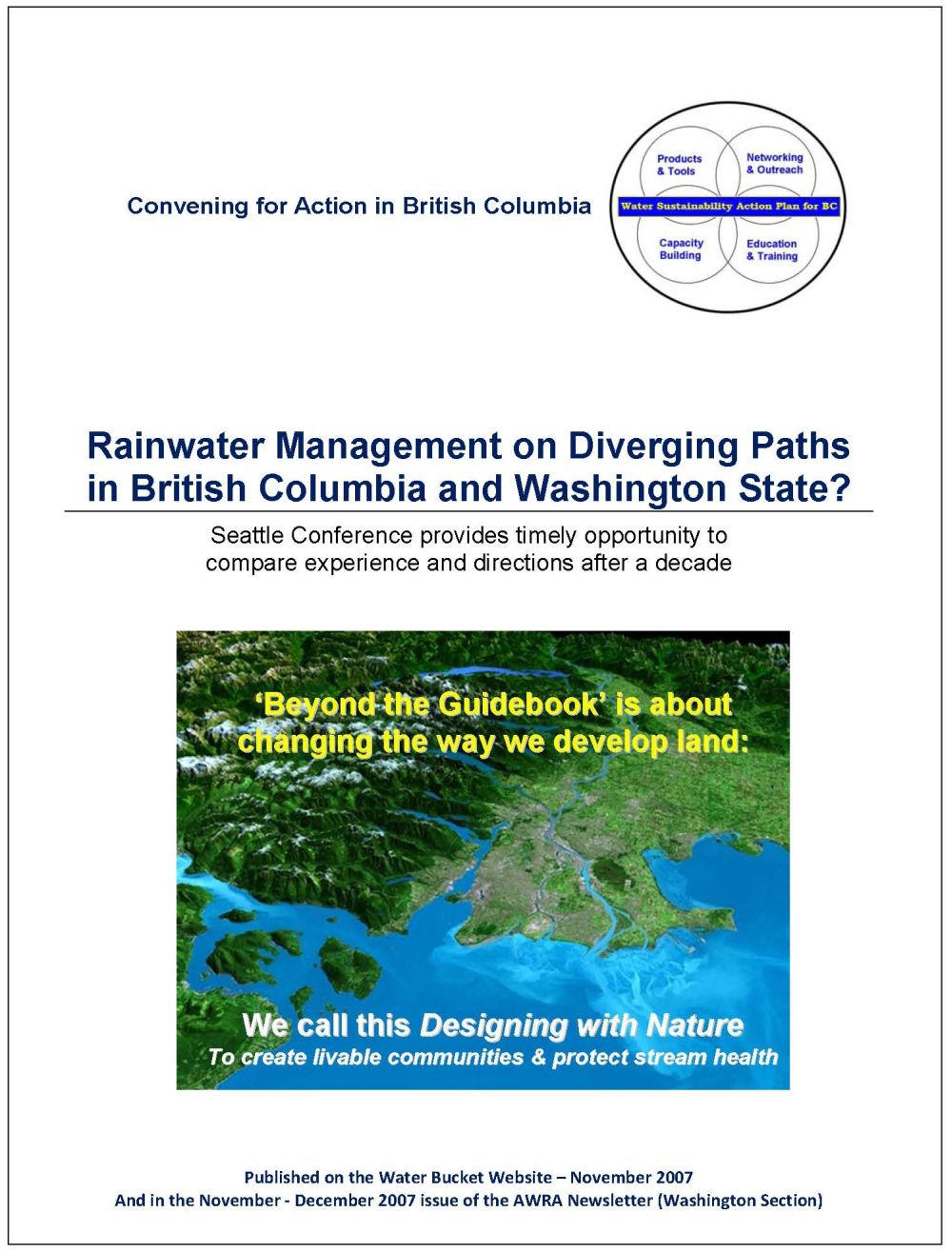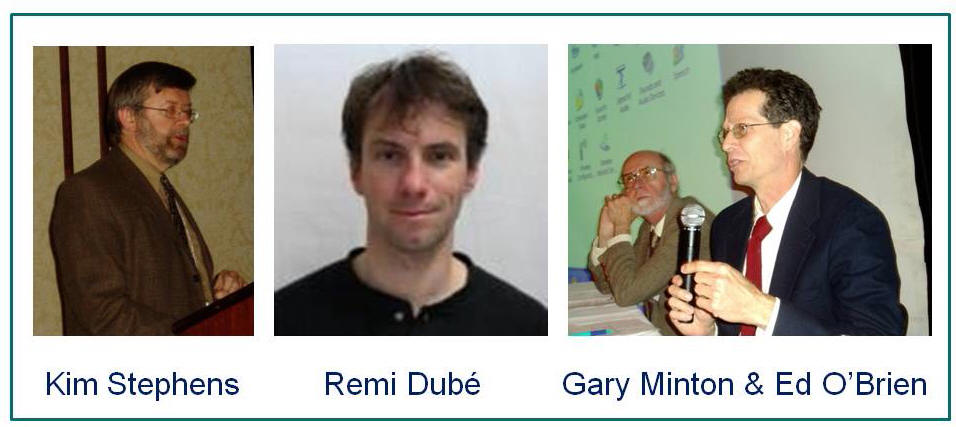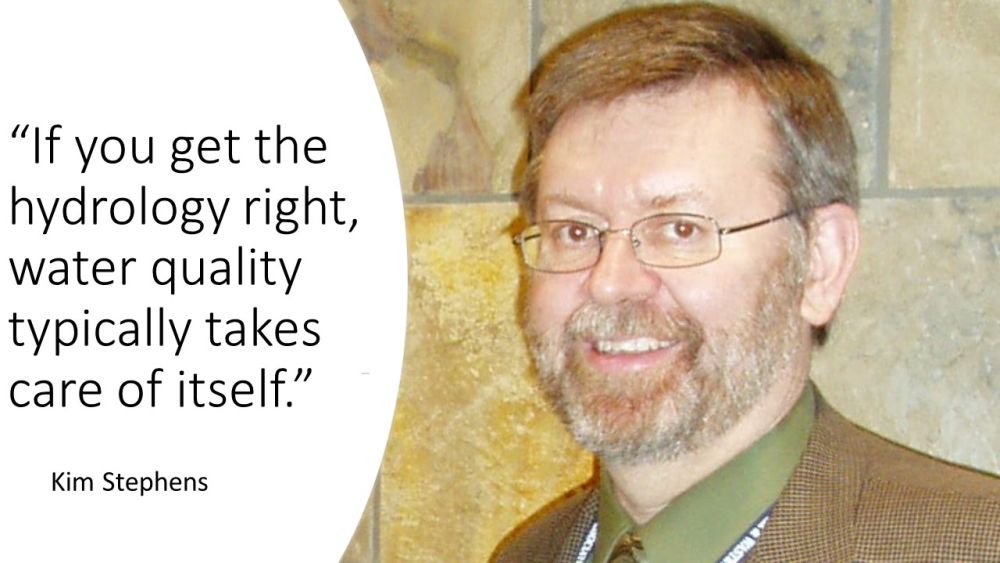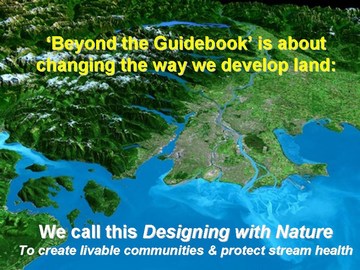Water Sustainability Action Plan introduced to Washington State audience at cross-border conference

Panel Session at Cross-Border Conference
In October 2007, the American Water Resources Association and the Canadian Water Resources Association co-hosted a conference in Seattle that included a cross-border panel session on Stormwater Management and Low Impact Development. Three questions framed the panel presentations and surrounding discussion:
- What effects have technology improvements and increasingly stringent rainwater/stormwater management requirements over the past 20 years had on the water quality of receiving waters
- How will those resources be affected by burgeoning population growth and development in the future?
- And what lessons can Washington State and British Columbia learn from each other as they strive to minimize the impacts of rainwater/stormwater runoff?
The panel session created a timely opportunity to compare an American top-down prescriptive approach versus a Canadian bottom-up educational approach.
The Cross-Border Panel
Kim Stephens and Remi Dubé provided a British Columbia perspective, while Ed O’Brien and Gary Minton provided a Washington State perspective.
- Kim Stephens is the Program Coordinator for the Water Sustainability Action Plan for British Columbia, and was principal author of Stormwater Planning: A Guidebook for British Columbia
- Remi Dubé is the City of Surrey’s Drainage Planning Manager, and is on the steering committee for the inter-governmental partnership that developed the Water Balance Model for British Columbia.
- Ed O’Brien is an Environmental Engineer with the Washington Department of Ecology, and was a contributing author to the 2001 and 2005 editions of the Stormwater Management Manual for Western Washington.
- Dr. Gary Minton has been a leading contributor to the development of design criteria for rainwater/stormwater treatment relevant to the conditions of the Pacific Northwest. He is the author of the textbook Stormwater Treatment.

Designing with Nature in British Columbia
“In British Columbia, we have made a conscious decision to go the educational route,” reported Kim Stephens, “It is all about establishing expectations and creating an environment that encourages innovation and gets practitioners excited about what they are doing. The culture is changing.”
“We call our approach designing with nature,” continued Remi Dubé, “We have borrowed from the teachings of Ian McHarg because we believe this is the way we will create livable communities and protect stream health.”
What the Science is Telling Us
Ed O’Brien, in his presentation, stated that: “Locally, our knowledge was and still is way ahead of the federal game because of Puget Sound Plan initiatives and a few forward-thinking local governments. The federal rules impede our progress in implementing strategies and requirements that we know are necessary.”
Kim Stephens agreed. “Rainwater management practice in Washington State is apparently being driven by a water quality regulation when a decade ago the science…and in particular the work of Rich Horner and Chris May…told us that changes in hydrology, not water quality, must be the focus of our efforts.”

Change the Way Land is Developed
Stephens, Dubé, Minton and O’Brien agreed on the need to tackle land use because that is where changes in hydrology are created. “We have a number of manuals in Washington State, but the design criteria don’t reflect what we have learned,” observed Gary Minton.
Minton and O’Brien both commented on the limited effectiveness of end-of-pipe solutions. “Yet that is where all your effort is going….into ponds at the end of piped conveyance systems,” commented Kim Stephens. “Yes, and the ponds are over-sized,” added Gary Minton.

Contrasting BC and Washington State Approaches
The integration of rainwater management and land use is the differentiator between British Columbia and Washington State.
“In Washington State, we cannot achieve environmental protection using current methods of development,” bemoaned Ed O’Brien, “Not many new developments are applying low impact development techniques. There isn’t a land use dictator who can demand change. It will take public education to instill a culture change for us to have any hope that we can protect aquatic resources in the urban environment.”
According to Kim Stephens: “In British Columbia, we are creating change through on-the-ground partnerships – for example, the Green Infrastructure Partnership, a consortium of government and non-government organizations. Finding the right solution is an outcome of sharing a vision about what we want our communities to look like, not because a government agency prescribed a regulation. For us, designing with nature has become a rallying cry.”

Beyond the Guidebook
In 2002, Stormwater Planning: A Guidebook for British Columbia set in motion a chain of outcomes that has resulted in British Columbia being recognized internationally as a leader in implementing a natural systems approach to rainwater management in the urban environment.
“In 2007, Beyond the Guidebook incorporated lessons learned from experience, and took the Guidebook to the next level of evolution,” stated Kim Stephens.
“Beyond the Guidebook refers to a runoff-based approach to drainage modeling that connects the dots between source control evaluation and stream health assessment. In a nutshell, it means this is ‘where science meets analysis’ because runoff volume management is directly linked to stream erosion and water quality.”
Downloadable Document:
To read the complete story, click on Rainwater Management on Diverging Paths in British Columbia and Washington State?

